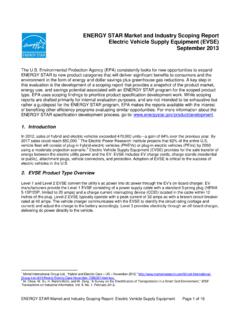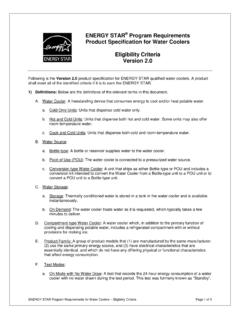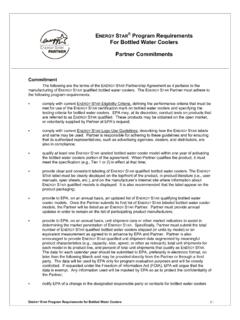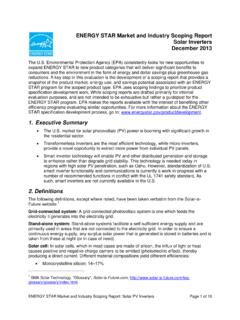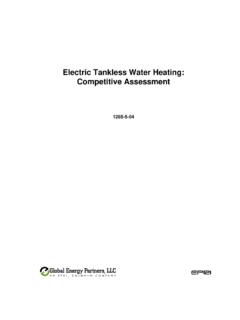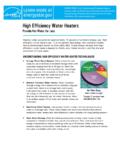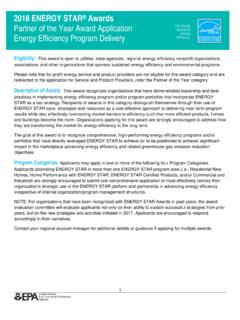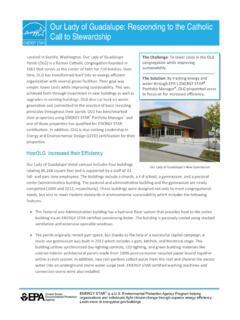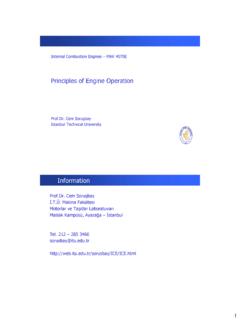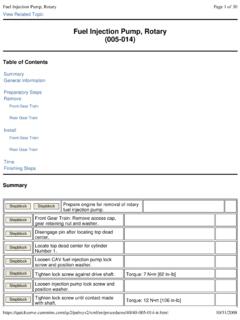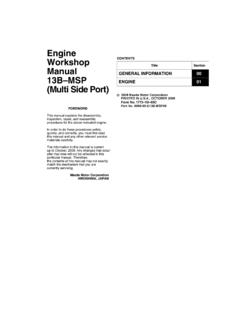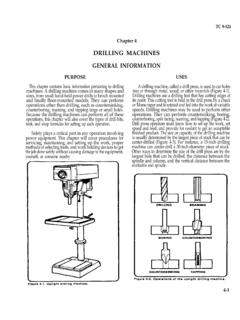Transcription of Piller - Comments on Draft 3 Specification for UPS
1 1 Frank Herbener 20 January 2012 Comments from Piller on the ENERGY STAR Specification and Test Methods for UPS Draft 3 Piller likes to thank EPA for the chance to participate in the UPS Specification process. We appreciate that we are allowed to send in our Comments on Draft 3 of the Specification in this late stage of the development process. Taking this chance we like to give you some general Comments as well as we try to help you to integrate rotary UPS into the Specification . The current Specification Draft 3 shows that you and the other stakeholders already put a lot of efforts into this Specification . Comments on the Eligibility Criteria Draft 3 Version 1 Line 3 to 23 Definitions We would like to ask you to add some general information about rotary UPS to the definitions.
2 rotary UPS do have their own product standard IEC 88528-11 since 2004. There is to distinguish between two major basic designs. 1. rotary UPS (RUPS) without Diesel: During a mains outage the load is supplied from an energy storage device which can either be batteries or flywheels. This type of UPS can like the static UPS be combined with external Diesel-Generators 2. Diesel coupled rotary UPS (DRUPS): A Diesel engine controlled by the UPS can mechanically drive the horizontal generator of the UPS in case of a long mains outage. During short term mains outages or until the Diesel is started the load is supplied from an energy storage device which can either be batteries or flywheels. More possible design variants are listed in the IEC 88528-11 Line 51 to 55 Stored Energy Mode We suggest to add the possibility that in case of a DRUPS the load can also be supplied by the integrated Diesel engine: All power is derived from the energy storage system or, in case of a DRUPS, from the integrated Diesel engine or a combination of both.
3 Line 77 to 82 Bypass In the bypass terms we are missing a bypass utilizing a contactor or a switch which can automatically be operated by the UPS. Therefore we suggest to distinguish between an automatic and a manual bypass, wherein the manual bypass would be identical to the maintenance bypass. The static bypass then would be a subset of the automatic bypass. Line 103 to 127 Acronyms In correspondence to the two major basic designs of rotary UPS we suggest to add the acronyms RUPS for rotary UPS and DRUPS for Diesel rotary UPS to chapter 1 part J. Line 165 to 171 Rounding To ensure proper measurement and rounding, we would like to suggest to add the following statement: According to IEC 62040-3 c the final efficiency values in % shall be rounded to the first decimal place at the given rated load fraction.
4 Comments from Piller on the ENERGY STAR Specification and Test Methods for UPS Draft 3 Page 1 of 3 Line 172 to 238 Energy Efficiency Requirements According to Table 1 of the Qualification Criteria the relevant load profile for all of our products is the one which is valid for units above 10 kW. As a manufacturer of mainly large UPS modules of up to 2700 kW the given load profile does not match our experiences. According to your statement in the note on page 6 that use is correlated with output power we know that normally there is less built in overcapacity in large scale systems than it is in small scale systems. The same should apply for large static UPS systems. We therefore would like to suggest adding another line to the table that applies to UPS modules above 200 kW output power.
5 This separation of modules greater than 200 kW is also used in IEC 62040-3 Tables to We would like to propose to use the following load profile for these units: 10% operated at 25% load, 50% operated at 50% load and 40% operated at 75% load. This load profile takes into account that large scale UPS are usually running with about 45% load in N+N redundancy, 65% to 85% load in N+1 redundant systems and only very few of them below a load level of 30%. Line 289 to 297 Power Factor Requirements We suggest to use the term input power factor to avoid misunderstandings. Additionally we would like to propose that the input power factor requirement should be defined for 100% resistive load and rated input voltage. It might also be worth to think about the fact, that each portion of reactive current that is taken from the mains adds losses to the incoming distribution system.
6 A change of the input power factor requirement from to would save approximately 10% power losses in the distribution. A power factor of should be achievable at least for UPS with more than 10kW rated output power without disqualifying too many products that are otherwise energy efficient. UPS running in VFD mode do not have any influence on their input power factor because it is equal to the output power factor which is determined by the load. We therefore propose to exclude them from this requirement. So the input power factor requirement will be applicable for VI and VFI UPS only. Line 302 to 325 Power and Performance Data Sheet To allow easy reproducibility of the measured efficiency data we propose that the UUTs losses which are used to calculate the efficiencies should be given in the data sheet.
7 These values would also automatically contain information about the resolution of the directly measured power values the efficiency calculation is based on. The losses at zero load are not efficiency relevant but do complete the picture of the general energy consumption of the UUT. Line 329 to 362 Communication and measurement requirements We would like to suggest to complement this requirement by saying that the kWh should be measured at the output of the UPS. According to other stakeholders Comments we would like to propose to require a minimum accuracy for this measurement. An accuracy of +/- 5% should be achievable with most measurement equipment already built in the UPS and should also be sufficient to evaluate the energy consumption of the loads. Comments on the Test Method Draft 3 Version 1 We generally agree to take the test methods from IEC 62040-3 also for rotary UPS.
8 The tests are more precisely specified than in the IEC 88528-11 and before the IEC 88528-11 has been released we have been using the standards IEC 62040-x also for our rotary products. Line 29 to 37 AC Input Power Table 1 is named Input Power Requirements , but shows input voltages and frequencies. We recommend to change this to Input Supply Requirements to avoid misunderstandings. Based on our experience the voltages 415Y/240 Vac 50 Hz (Australia) and 380Y/220 Vac 60 Hz (South Korea) are missing. We would like to ask you to add these voltage levels. Comments from Piller on the ENERGY STAR Specification and Test Methods for UPS Draft 3 Page 2 of 3 2 The voltage level 415Y/240 Vac at 60Hz might be a result of a mistyping. Up to now we have never heard about this voltage level.
9 Generally we do not really understand the reason behind the list of voltage and frequency combinations in Table 1, because in lines 35 to 37 you concurrently allow to use the maximum rated input voltage of the UUT if it is not listed in the table. Therefore we would like to suggest that you don t use the voltages from the table but to test each unit at its maximum rated input voltage that then also needs to be reported in the test. If this suggestion is not suitable for small size UPS we would like to ask you to take it for units above 10 kW only. Line 100 to 114 Steady State Looking at line 105 it not really clear to us what power it meant here. Input and output power will vary with the load and can therefore not be used to verify that the UPS is in a steady state condition. We think that it might be the best to look at the power losses of the UPS, which should remain quite constant also in case of small load variations.
10 This leads to the question why you do not use the steady state definitions described in IEC 62040 3 c, because it is the temperature that defines the steady state condition for the UPS and not the steadiness of its losses. Line 117 to 131 Efficiency measurements We believe that accumulating power measurements over 15 minutes is a very good method to get valid efficiency data. We also agree that a requested sampling rate of exactly 1 Hz might be difficult to achieve because the sampling rate depends very much on the measurement equipment. But giving no conditions for a sampling rate the power/energy values are accumulated with leaves a big variety of possible sampling rates, starting with a hand made measurement every 5 minutes up to an automated measurement every millisecond. We therefore suggest to request a minimum sampling rate of about 1 minute ( ), to guarantee a basic accuracy of the measurement.
